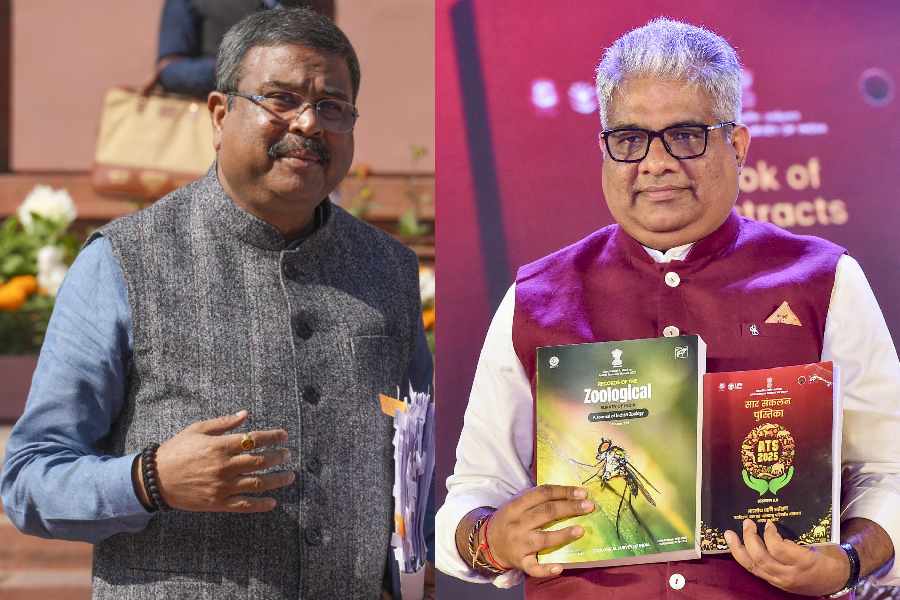June 1: The endangered Gangetic river dolphins here have found a new set of messiahs — schoolchildren.
These young conservationists are now part of a programme that involves spreading awareness among people about the need to save this friendly marine mammal from extinction.
A Dolphin Mela is being organised at the Bishu Nirmala hall at Latasil tomorrow to showcase posters, models and paintings of river dolphins created by the students. It will also include art, quiz and elocution competitions for the participants.
The mela, which has been organised by the Centre for Environment Education (CEE), North East, in association with the Kalpadroom Foundation and Oasis Foundation, as part of the Union ministry of environment and forest’s ongoing Gangetic River Dolphin Conservation Education Programme, will see participation of students and teachers from 21 schools from the Guwahati cluster of the conservation programme.
“The Dolphin Mela has been organised to highlight the need to conserve the Gangetic river dolphin that is a rare species found in the Brahmaputra. We have involved students of schools located in close proximity to the Brahmaputra in the Gangetic River Dolphin Conservation Education Programme. Under this project, we hold various activities like games and quizzes to enlighten these students on various aspects of the river dolphin.
“The students also have to make art projects like paintings, posters and models on the animal. All their creations will be displayed at the Dolphin Mela,” Simanta kalita, project co-coordinator of CEE, North East, said.
The Gangetic River Dolphin Conservation Education Programme has been under way in various schools of Kamrup (metro) district for the past seven months.
The organisers are also hopeful that once the students realise the importance of conserving the river dolphins, they will be able to better motivate adults to do the same.
“Our main motto is to save the river dolphin from extinction. Once students acquire knowledge about the issue, they can go home and at least motivate family members and neighbours to do their bit in saving this animal. Even today, many people kill the animal for commercial purposes. Hence, it is necessary that young and old join hands to preserve it,” Kalita said.
On the other hand, CEE, North East, has also been entrusted with the responsibility of identifying and documenting different species of animals inhabiting the Raj Bhavan campus here.
“So far, we have found that more than 55 species of birds and different varieties of reptiles, snakes and monkeys inhabit the area comprising the Raj Bhawan campus. We will engage experts from different organisations to identify and document these species. This is being done as part of Eastern Roshni, an initiative to develop the Raj Bhawan campus into a green castle of sustainable practices and create awareness on a sustainable habitat for animals,” Kalita added.










